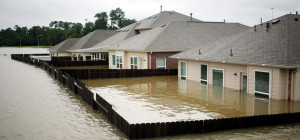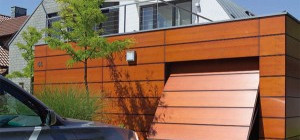You might be familiar with this story. A thunderstorm strikes. You see lightening nearby. The power goes out for a minutes and comes back. But when you try switching on your T.V- it just doesn't work!
Both in the U.K and the U.S.A, power surges give way to massive property damage every year. Such surges can overload instantly and consequently, your electronics experience short circuit. Recurrent surges cam also lead to excessive damage to your property-including your desktops, televisions, stereos or anything plugged to the wall.
Learning about power surges-how they are caused and how can you avoid them will surely save you lots of money, keeping your properties safe. However, lightning protection is something that very few people actually seem to pay heed to. But what about learning a thing or two about them, so that such problems never crop up?
Where Do Power Surges Originate?
There are a number of sources of power surges. For example, they can start from any electric utility enterprise when some power grid changes are going on. It can occur inside your home if bigger appliances, such as refrigerators and air conditioners are turned off and on. However, the commonest cause of power surges is obviously, lightning. If there is a lightening, then power surges can enter through the satellite dish cable and cable TV, as well as through the incoming service line of electrics or through incoming lines of telephone.
How To Protect Your Property?
You can consider using Point-of-Use Surge Protection Device, which are popularly known as SPDs, However, make sure that the SPD is combined with a solid grounding system. This will protect your valuable electrical devices with maximum cases of electrical surges. However, SPDs do not arrest or suppress a surge. Basically, it redirects the surge to the ground. By and large, point-of-use surge suppressors resemble a standard plug strip. But unless it is particularly mentioned, never be under the notion that the plug strip will offer surge protection, as well. Also, you can install electrical outlets that especially offer protection against surge. These outlets are very useful in places where there is insufficient place for plug-in surge guards, for example, near a countertop microwave.
Considering The Two-Tiered Method
SPDs are ideal to protect specific appliances in your home. However, when it comes to considering a more inclusive approach for surge and lightning protection, you can combine this SPD with another device, such as a surge protector for electrical panel or a surge protector for service entrance. If you pursue this two-tier approach, then you can protect your place from almost any type of power surges.

Some More Important Things To Consider
- It is always wise to choose a lightning and surge protector that comes with an audible alarm, as well as an indicator light that helps lets you know when it needs a replacement. It should also ideally provide a visual representation that the product is working perfectly.
- Always chose SPDs, which are backed with manufacturer's warranty. Also, remember that certain warranties cover the device only, while others also offer to cover broken equipments, which might be connected to the unit.
- Always remember that the lightning strikes can be so powerful, that they can overpower even the finest surge protection system. So, no matter the arrangements you make. It is always sensible to unplug your equipments if you feel that a surge is expected to come.
- In case you have not yet invested on a surge protection system, but still planning to buy new electrical gadgets in near future, then at least consider some considerably inexpensive surge suppressing unit to give your investment the protection that it deserves.
Shared by commerciallightning.com








